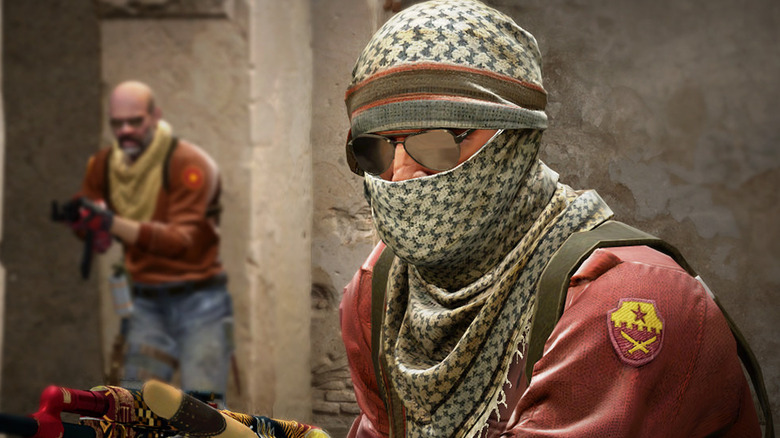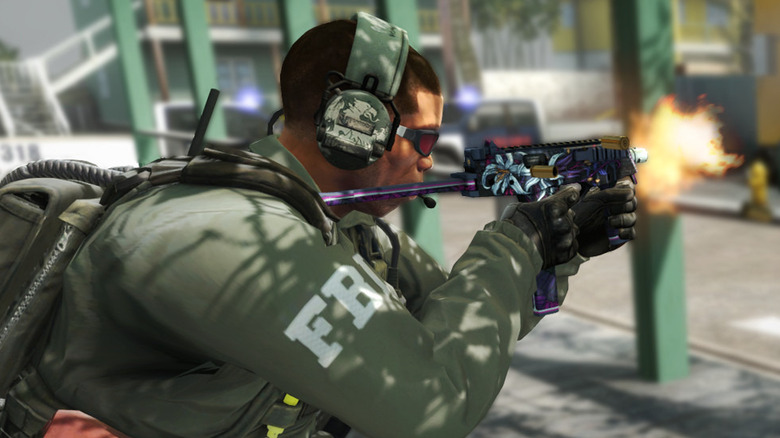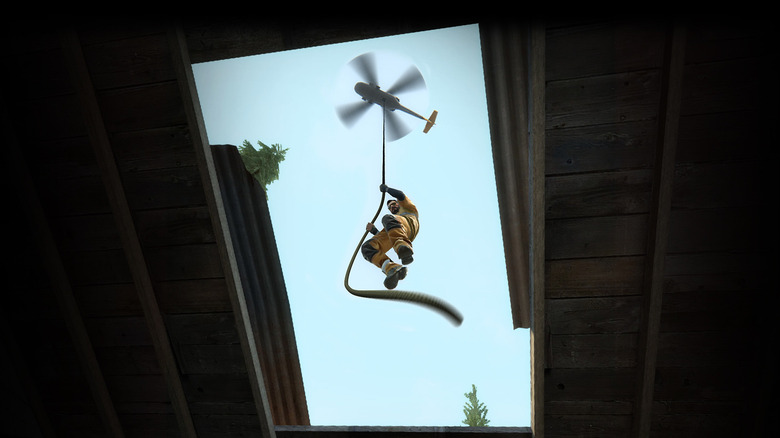How Counter-Strike Went From Half Life Mod To A Massively Influential FPS
When you think of "Counter-Strike," you probably think of "Counter-Strike: Global Offensive" (a.k.a "CS:GO"). It's the latest iteration of the "Counter-Strike" series and a consistently popular first-person shooter, averaging over 500,000 players online at any given time. Did you know about its humble beginnings as a "Half-Life" mod, though?
"Counter-Strike" and its successors focus on bomb defusing as their main mode. Two teams face each other with one acting as terrorists and the other as counterterrorists. Terrorists need to plant a bomb in the counterterrorists' territory, and counterterrorists need to either foil their plans before the end of the match or kill all the terrorists. This game has influenced many other shooters that came after it. "CS:GO" later implemented an in-game economy to balance buying the equipment you could use during each round and earning perks for performance.
So what makes it so good and how did it get there? Here's how a "Half-Life" mod evolved into this famous first-person shooter.
The beginnings of Counter-Strike
The first "Counter-Strike" had a couple of names including "Half-Life: Counter-Strike" and "Counter-Strike 1.6." Of course, this was because of two dudes who originally created it as a "Half-Life" mod instead of an original project. Its two creators were then-college students named Minh "Gooseman" Le and Jess Cliffe. They finished the game in 1999 and let people download it for free, after which it became a huge hit. It was big enough that Valve, the developer of "Half-Life," sought the two out and hired them for the development for an official "Counter-Strike" game. Valve also bought the rights to "Counter-Strike" and its following installments.
"Counter-Strike" is the name of the first version of the game officially published under Valve. Minh and Cliffe also had a considerable hand in creating this game. It launched in 2000 for Windows, OS X, Linux, and Xbox One and received critical acclaim from notable publications including IGN, GameSpot, and Game Revolution. The New York Times also reported on it as one of the first games to receive a fantasy esports league. Minh and Cliffe continued working on the series together until Minh eventually left to work on his own game. Cliffe stayed with the company until 2018 when he was imprisoned. So, out of the two, Cliffe was the only one involved with "CS:GO."
Counter-Strike: Global Offensive
"Counter-Strike: Global Offensive" launched in 2012, earning critical acclaim for its gameplay and map design. Many players considered it a more polished version of "Counter-Strike: Source," which failed to reach the popularity that the fandom hoped for. Multiple "Counter-Strike" games were released between the first with "Counter-Strike: Source" apparently being a decent predecessor to its younger sibling.
Critics appreciated the game's return to simplicity and close resemblance to the original "Counter-Strike." Engadget praised it as a "tactical, skill-based game" that didn't complicate its gameplay with killstreaks, bonuses, or powerups. "It's you and a team, and (for the most part) it's always sudden death," its reviewer wrote. Destructoid's Allistair Pinsof pointed out the similarity to "Counter-Strike" and how the community would likely appreciate its faithfulness to the original, especially with the updated graphics.
"Global Offensive delivers on the promise of a faithful, polished, and better looking Counter-Strike for whoever wants it," wrote Pinsof, who followed the "Counter-Strike" series since his childhood. "Even if the community doesn't meet the golden standard of 1.6 and Source, CS:GO will remain a multiplayer classic for those willing to put in the time to learn the maps and weapons." He was right.
"Counter-Strike: Global Offensive" is available on PC (via Steam), Xbox 360, and Xbox One. It also supports Windows, Mac, and Linux.



